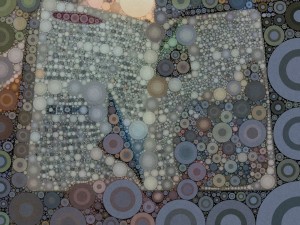 The always fabulous Jude Marie Green mailed me. Her question, which got me thinking, was: What does an editor do (besides acquire) to make the issue “come together”?
The always fabulous Jude Marie Green mailed me. Her question, which got me thinking, was: What does an editor do (besides acquire) to make the issue “come together”?
It wasn’t the first time this question’s come up, and I’ve never seen much about it, so I wanted to talk a little about the idea of arranging things. Because an ideal magazine issue or anthology isn’t just a bunch of stories in a box. In theory, at least, the editor has selected stories that resonate with each other and arranged them in a way that’s meaningful. The whole is greater than the sum of the parts.
Here’s the only practical thing I’ve ever heard on the subject: Lead with your strongest story, and end with your second strongest. That seems like good advice to me, because a) first impressions flavor the way they’ll read what follows and b) at the end, you want the reader left feeling satisfied (or intrigued or delighted, but hopefully a favorable adjective, rather than let-down, disappointed, or relieved that the book is over.)
Beyond that – and this is entirely my philosophy and there are no guarantees any other editor feels the same – you want the stories to speak to each other. I’ve mentioned in another post that I used what was then a forthcoming collection, Near + Far, as an exercise for my online editing class. I gave the students the stories and told them to figure out an order and then be prepared to explain why they picked that order. Since there were actually two sections of the book, they actually did two ToCs, one for the “Near” part, which contained only near-future SF, and one for the “Far” part, which was devoted to SF farther out in time. It was enlightening (and sometimes entertaining) and I used that feedback when determining the actual order.
So here’s what I think about when arranging stories:
- Texture: I’m looking at style here, and trying not to clump stories together that are all the same. I want a sense of variety, where a plain style story follows one that is ornate. I may try not to make those transitions too jarring, to have the book flow from highly ornate prose to less ornate to unadorned, and then back again.
- Rhythm: When thinking about rhythm, I’m looking at length as much as anything, varying short with longer pieces. I want them to alternate a bit, rather than have a structure where I have three pieces of flash in a row followed by three longer pieces.
- Theme: Here, actually, I might clump things, and have, for example, three stories dealing with loneliness together, in order to give the reader a sense of alternating perspectives. Theme’s sometimes the guideline for an anthology overall, where every story deals with a particular concept, but even there I’d look for subsets and try to arrange them that way.
- Emotion: Personally, I’d follow a sad story with a happy one, or alternate humor and tragedy. Again, I’m striving for a sense of variety, but I also don’t want to have, say, three downers of a story in a row and give someone the feeling that the whole book will fall along those lines.
Some of these seem contradictory? Yup. Putting something like this together is a balancing act, and answers to what should go where are often dependent on what’s already been decided. Next time, I’ll go through the final versions of the ToCs for Near + Far and talk about why they’re in the order they are. Hopefully, that will show some of this in action.